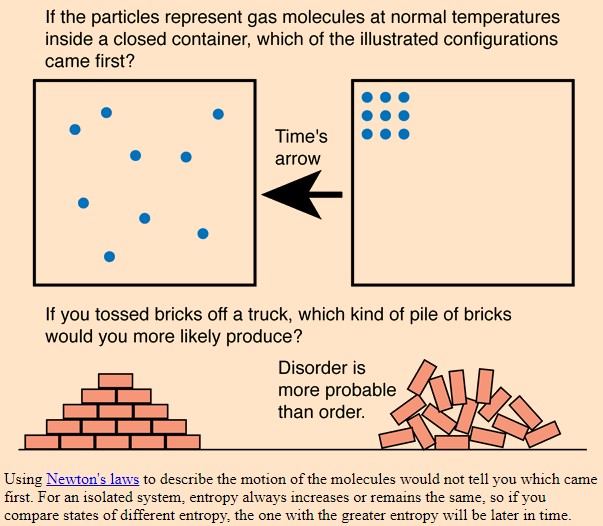Yet a few theoretical physicists argue that because time does march on, it is like an arrow. This 'arrow of time' would move into the future, and to bolster their idea they invoke the second law of thermodynamics: the principle that microscopic arrangements of physical systems tend to increase in randomness, moving from order to disorder. The more disordered a system becomes, the more difficult it is for it to find its way back to an ordered state, and the stronger the arrow of time.
In short, the universe’s tendency toward disorder is the fundamental reason why we experience time flowing in one direction.

Credit: Georgia State University
A new paper hopes to shore up this belief by tackling two questions. If they looked at a particular system, would they be able to quantify the strength of its arrow of time, and would they be able to sort out how it emerges from the micro scale, where cells and neurons interact, to the whole system?
It's theoretical physics, not science as the public understands it, and often it can seem like fiction, but the researchers explored how an arrow of time could be decomposed by observing specific parts of a system and the interactions between them. The parts, for example, could be the neurons that function within a retina. Looking at a single moment, they showed that the arrow of time can be broken down into different pieces: those produced by parts working individually, in pairs, in triplets or in more complicated configurations
After accepting this decomposing of the arrow of time, the researchers analyzed existing experiments on the response of neurons in a salamander retina to different movies. In one movie a single object moved randomly across the screen while another portrayed the full complexity of scenes found in nature. Across both movies, researchers found that the arrow of time emerged from the simple interactions between pairs of neurons—not large, complicated groups. The team also observed that the retina showed a stronger arrow of time when watching random motion than a natural scene.
The authors believe this latter finding raises questions about how our internal perception of the arrow of time becomes aligned with the external world.






Comments